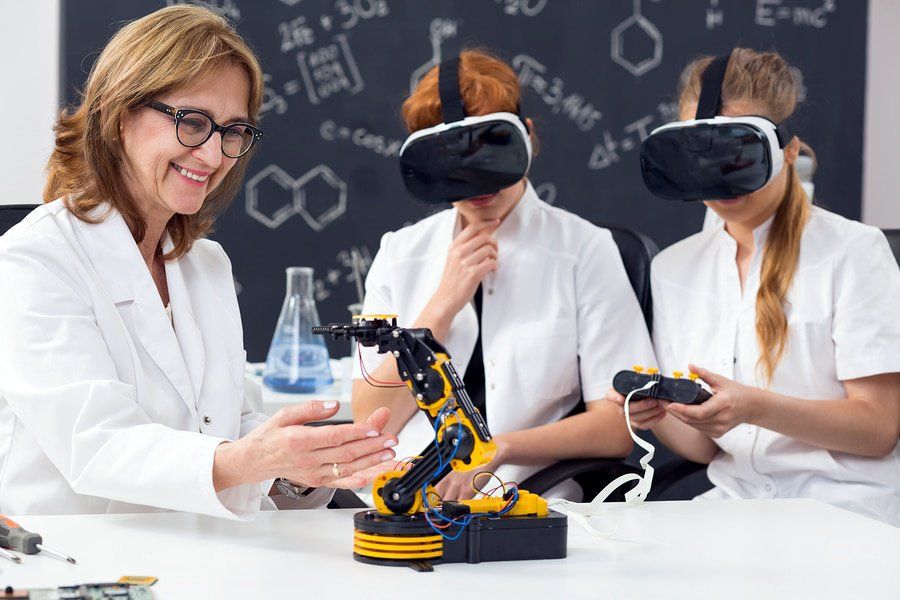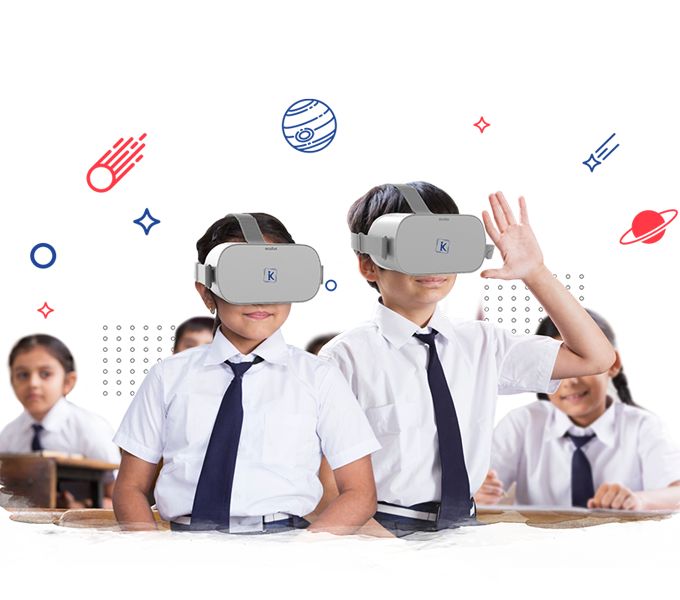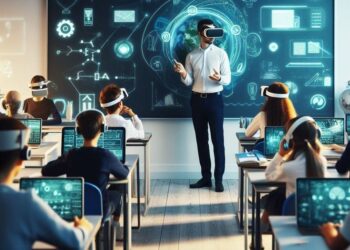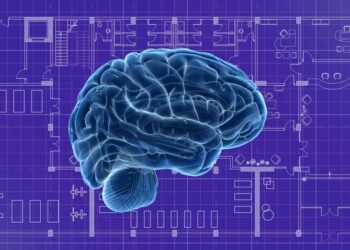The traditional classroom, a cornerstone of society for centuries, is on the brink of a profound transformation. Chalkboards have given way to smartboards, and heavy textbooks are slowly being replaced by tablets. Yet, these advancements, while significant, are merely incremental. The next great leap is immersive, experiential, and poised to completely redefine how students learn. We are entering the age of Virtual Reality (VR) in education, a technological shift that promises to move learning from a passive act of observation to an active process of participation.
For generations, education has grappled with the challenge of conveying complex, abstract, or inaccessible concepts. How do you truly explain the scale of the solar system, the intricate workings of a human cell, or the vibrant culture of ancient Rome using only words and pictures? VR technology shatters these limitations. It dissolves the four walls of the classroom, transporting students to distant galaxies, microscopic worlds, and pivotal moments in history. This isn’t just about engagement; it’s about creating deep, contextual understanding and fostering a level of curiosity that traditional methods struggle to ignite.
This article explores the transformative potential of Virtual Reality in the classroom. We will delve into the core benefits that VR brings to the learning process, from enhanced comprehension to improved knowledge retention. We will examine practical applications across various subjects, outline the steps for successful implementation, and address the real-world challenges that educators must navigate. Finally, we will look to the future, exploring how VR and its related technologies are set to build a more engaging, equitable, and effective educational landscape for the learners of tomorrow.
The Core Advantages: Why VR is a Game-Changer for Learning
Integrating VR into an educational setting is not about adopting technology for technology’s sake. It is about leveraging its unique capabilities to unlock tangible pedagogical benefits that fundamentally improve the learning experience and outcomes.
A. Making the Abstract Concrete: Many critical concepts, particularly in STEM fields, are difficult to visualize. VR can make these abstract ideas tangible. Students can walk on the surface of Mars, manipulate a 3D model of a complex molecule, or step inside a running jet engine. This experiential learning process transforms abstract theories into concrete, memorable experiences, leading to a much deeper and more intuitive understanding.
B. Boosting Engagement and Knowledge Retention: The classic “learning pyramid” suggests that people remember far more of what they do than what they read or hear. VR is the ultimate “doing” machine. By immersing students in a multisensory, interactive environment, it commands their full attention and minimizes distractions. This high level of engagement translates directly into superior knowledge retention. A student is far more likely to remember the parts of a cell after “swimming” through one than after simply studying a diagram in a textbook.
C. Enabling Safe and Repeatable Practice: In many fields, practical training carries inherent risks or high costs. Medical students can perform complex surgical procedures in a risk-free virtual environment. Engineering students can practice maintaining heavy machinery without danger. VR provides a safe and repeatable training ground where mistakes become valuable learning opportunities, not costly or dangerous accidents.
D. Fostering Empathy and Cultural Understanding: One of VR’s most powerful applications is its ability to cultivate empathy. By allowing students to experience the world from another person’s perspective, it can break down barriers and build cultural understanding. Students can walk through a refugee camp, experience life in a different historical period, or see the impacts of climate change firsthand, fostering a level of emotional connection that articles and videos cannot replicate.
E. Personalized Learning Pathways: VR applications can be adapted to individual student needs. A student struggling with a particular concept can spend more time exploring it in a virtual environment, receiving customized feedback and guidance. This allows for a more personalized and student-centric approach to education, where learners can progress at their own pace and explore areas of personal interest in greater depth.
Practical Applications Across the Curriculum
The power of VR is not limited to one or two subjects. Its applications are as broad as the curriculum itself, offering unique learning opportunities for students of all ages.
A. Science and Biology: Imagine dissecting a virtual frog, eliminating ethical concerns while allowing every student a clear, unobstructed view. Students can journey through the human circulatory system, watch plate tectonics in action, or conduct complex chemistry experiments without the need for a physical lab.
B. History and Social Studies: Forget simply reading about historical events. VR allows students to be present. They can stand on the Forum in ancient Rome, witness the signing of the Declaration of Independence, or explore the trenches of World War I. These immersive historical field trips make history a living, breathing subject.
C. Geography and Earth Sciences: Why look at a map when you can stand on the rim of the Grand Canyon, explore the Amazon rainforest, or dive into the Great Barrier Reef? VR provides an unparalleled sense of scale and place, making geography an exciting adventure.
D. Art and Design: Students can visit the world’s greatest museums in virtual reality, examining famous sculptures from every angle. Aspiring architects and designers can build and walk through their own 3D creations, gaining a much better understanding of space and design principles.
E. Technical and Vocational Training: For career and technical education (CTE), VR is revolutionary. Automotive students can learn to assemble an engine, welding students can practice their technique in a simulated environment, and future electricians can learn to wire a house, all in a safe and controlled virtual setting.
Implementing VR in the Classroom: A Strategic Approach

Bringing VR into a school or district requires more than just buying headsets. It demands thoughtful planning, professional development, and a focus on pedagogical goals.
A. Defining Clear Learning Objectives: The first step is to identify where VR can have the most impact. Start with the curriculum and pinpoint areas where immersive experiences can solve a specific teaching challenge or significantly enhance understanding. The technology should always serve the educational goal, not the other way around.
B. Choosing the Right Hardware and Software: The VR market has a range of options, from affordable smartphone-based viewers like Google Cardboard to more powerful standalone headsets like the Meta Quest series, and high-end PC-tethered systems. The choice depends on budget, age group, and the specific software you intend to use. It is equally important to research and vet the educational content platforms and apps to ensure they are high-quality, accurate, and aligned with your curriculum.
C. Prioritizing Teacher Training: Technology is only as effective as the educator wielding it. Comprehensive professional development is non-negotiable. Teachers need training not only on how to use the hardware and software but also on how to integrate VR into their lesson plans effectively. They need to learn how to manage a classroom of students in VR and how to facilitate post-experience discussions to solidify learning.
D. Addressing Logistical and Safety Concerns: Practical considerations are key. Where will the headsets be stored and charged? Who is responsible for maintaining them? It is also crucial to establish clear guidelines for use to ensure student safety, addressing issues like motion sickness (cybersickness) and ensuring the physical space is clear of obstacles.
Overcoming the Hurdles: Challenges on the Path to Adoption
While the potential of VR is immense, it is important to acknowledge and address the challenges associated with its implementation.
A. Cost and Accessibility: The initial investment for VR hardware can be significant, creating a potential equity gap between well-funded and under-resourced schools. However, as the technology matures, costs are steadily decreasing, and more affordable options are becoming available.
B. Lack of High-Quality Curated Content: While the library of educational VR content is growing rapidly, it can still be a challenge for teachers to find applications that are well-designed, factually accurate, and directly aligned with their specific curriculum standards.
C. Technical Infrastructure: High-end VR experiences may require powerful PCs and a robust Wi-Fi network, which can be a barrier for some schools. Standalone headsets are mitigating this issue, but reliable internet access for downloading content remains essential.
D. Managing the Classroom Experience: Managing a class of 30 students, each in their own virtual world, presents a new set of classroom management challenges for educators. New software solutions are emerging that allow teachers to guide, monitor, and control the student experience from a central tablet or computer.
The Future of Immersive Learning

Virtual Reality is just the beginning. The future of education lies in a broader concept of immersive learning, often referred to as Extended Reality (XR), which includes Augmented Reality (AR) and Mixed Reality (MR). AR will overlay digital information onto the real world, allowing a student to point their tablet at a diagram of a skeleton and see it come to life in 3D. The long-term vision is a seamless blend of the physical and digital worlds, creating a rich, context-aware, and endlessly interactive learning environment.
In conclusion, Virtual Reality is not a passing fad; it is a foundational technology that will fundamentally reshape the educational landscape. It offers a powerful solution to the age-old challenge of making learning engaging, effective, and meaningful. By transforming students from passive observers into active participants in their own education, VR empowers them to explore, discover, and understand the world in ways we once only dreamed of. The journey to full adoption will have its challenges, but the destination—a more curious, knowledgeable, and empathetic generation of learners—is well worth the effort.












